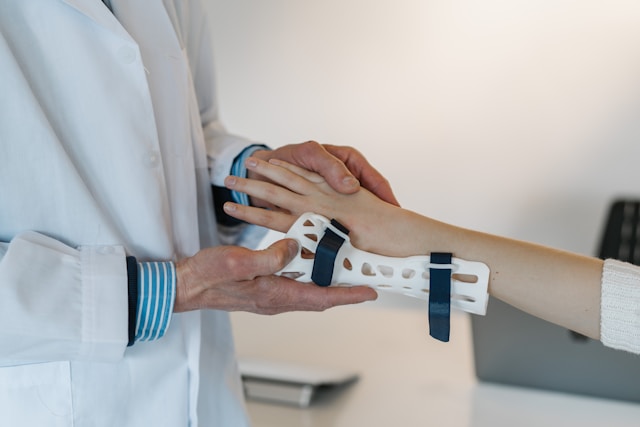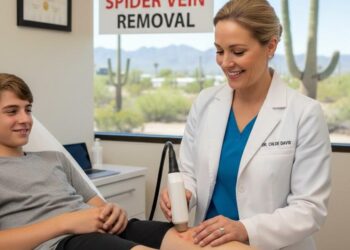Orthopedic urgent care in the United States has evolved rapidly in recent years, offering specialized walk-in services for bone, joint, and soft tissue injuries with efficiency, diagnostics, and patient-centred access. UK clinics stand to gain much by observing these advances, as exemplified by places like the Orthopedic Urgent Care & Walk-in Clinic in Knoxville, TN, which combines immediate diagnostics, specialist staffing, and flexible hours to meet demand. By comparing key features of US models with existing UK practice, we can identify valuable lessons for improving access, outcomes, and patient satisfaction.
Expanded Diagnostic Services On-Site
One of the major strengths of many US orthopedic urgent care centres is the integration of diagnostics—most notably, imaging such as X-rays and sometimes MRI or ultrasound—directly in the clinic. Patients with suspected fractures or joint dislocations can be assessed, imaged, and treated in a single visit. This contrasts with some UK settings, where diagnostic imaging may involve waiting for hospital radiology slots, causing delays in both diagnosis and treatment. By investing in imaging capability in urgent or minor injury units, UK clinics could reduce patient travel, avoid multiple appointments, and speed up recovery times.
Additionally, in the United States, several of these medical establishments provide on-site casting, bracing, splinting, and simple orthotics. The opportunity to perform splinting or bracing at the point of diagnosis allows patients to start the healing process earlier, thus avoiding the risk of other complications related to a delayed immobilization. Emergency care centres, as well as accident and emergency units in the United Kingdom, are profiting from the guarantee that staff training and equipment provision are adequate for handling musculoskeletal disorders, so that patients get direct access to appropriate care instead of being referred to other facilities.
Specialist Staffing and Multidisciplinary Teams
One of the major improvements in US Orthopedic Urgent Care is the employment of specialists, namely, orthopaedic surgeons, sports medicine physicians, nurse practitioners or physician assistants with the knowledge of musculoskeletal disorders. Usually, there are professionals focusing on orthopaedic urgent care only, who are different from general emergency and primary care physicians. The result of this is the increase in the accuracy of diagnoses, the better handling of complicated injuries, and the efficient guiding of patients to surgical or specialist follow-up care.
Most of the US models also include various multidisciplinary services such as physical therapy, sports medicine, orthotics, wound or cast care, and telemedicine (able to change the call day of a patient). The presence of these teams assures that the care provided is more continuous and more connected. UK clinics can benefit a lot from the use of the interdisciplinary teams, especially from the integration of the physiotherapists, specialist MSK (musculoskeletal) practitioners, and digital follow-ups. This makes sure the patients are given complete care, hence, there is a decrease in complications, fewer hospital readmissions, and better functional outcomes.
Extended and Flexible Access
Most orthopedic urgent care centres in the US usually provide extended hours, at times including evenings or weekends, and allow the walk-in patients without a prior appointment. Such flexibility helps to cater the highest demand for the cases like sports injuries, accidents, or acute exacerbations of chronic conditions which usually occur outside of the normal working hours. The walk-in option without an appointment further eliminates obstacles: patients are more likely to turn to prompt care instead of waiting or going to emergency departments which are often more expensive and overloaded.
Urgent Treatment Centres and Minor Injury Units in the UK are performing similar functions, but with certain limitations such as hours, clinician availability, or diagnostic resources which can affect their effectiveness. By adopting US models, UK clinics might consider longer opening hours, more staff during non-traditional hours, and simplified walk-in protocols as a means of cutting down on the waiting time. Also, the use of virtual triage or advice services can help the demand to be managed properly so that the urgent cases are dealt with first, while the non-urgent cases are guided towards other pathways.
Data‐Driven & Evidence-Based Growth
US clinic models are progressively depending on data to promote positive changes. As outlined in “The Five-Year Growth of an Orthopedic Urgent Care Center,” tracking patient volumes, peak times, the types of injuries and outcomes has been found to be instrumental in clinics planning their resources, adjusting their opening hours, and making investment decisions in equipment or staff that are informed.
In a similar vein, studies on primary care pathway models or outcome tracking in musculoskeletal injuries communicate that there is a significant decrease in costs and an increase in the level of satisfaction of patients when simple fractures and strains are managed swiftly and correctly.
While UK clinics still implement their monitoring processes, they could benefit from redesigning their systems to include real-time data feedback loops, patient outcome tracking beyond the initial visit, and the use of digital tools for monitoring recovery. Such changes would enable clinics to notice the holdups, resources that are not fully utilized, or the recurrence of problems, thus, being able to move along with continuous improvement. Moreover, it would also facilitate demonstrating cost-effectiveness, thereby, gaining the trust of funders and stakeholders.
Barriers and Considerations for UK Implementation
Bringing US innovations to the UK context is not an easy task and there are several challenges along the way. The funding models are significantly different by a large margin, for example, the US clinics that are privately or mixed-insurance-run businesses are more free to make investments, conversely in the UK clinics which operate under the NHS constraints may have less budget and more regulatory supervision. Another important issue is to what extent access to services will be fair in different areas, especially in rural areas. For instance, in the US, the clinics might be found in urban or well-served zones, while in the UK, services have to cover all the areas so that people in all communities can benefit.
On top of that, regulation, workforce training, and governance are among those matters which are just as important. The specialist staff component of (e.g., orthopaedic urgent care physicians or MSK specialists) involves training, credentialing, and setting up paths for recruitment and retention. The decision to raise the standard for diagnostic equipment in more clinics brings the issue of how the equipment will be maintained, who will oversee it and whether the quality is to be guaranteed. Also, people’s expectations regarding the situation have to be made clear to them so that they get the difference between urgent care and emergencies, referrals, and specialist follow-ups.
What UK Clinics Can Do Now: Practical Steps
It’s possible UK clinics could start the process by identifying already existing urgent treatment centres or minor injury units and then by investigating the diagnostic capacity of these healthcare units. One step towards this might be the setting up of a pilot programme in a unit where imaging and the presence of a specialist MSK are provided, evaluating staff and patient satisfaction, comparing costs, and outcomes. Moreover, the change of the hours of a specific centre to correspond with the demand (night or weekend, for instance) might be another way of ascertaining if the flexible access model is advantageous.
Staff training programs must be put in place or increased in capacity, especially non-physician clinicians (such as physiotherapists and advanced practitioners) who are expected to take over a bigger orthopaedic urgent care load. Digital investments (telehealth, remote follow-ups, patient self-management platforms) aimed at demand management could lead to fewer visits. To conclude, urgent care clinics should collaborate with hospitals or specialist orthopaedic centers ‘to make the referral process easier and identify early those patients who require surgery.’
Conclusion
Orthopedic urgent care US models can provide impressive insights for British clinics that wish to enhance patient access, speed of diagnosis, participation of specialists, and satisfaction of patients. To be practical, clinics combining on-site imaging, utilizing multi-skilled teams, providing walk-in and extended opening hours, and applying data to constantly improve their services have attracted patient preference and achieved a great deal of success in the US. While structural and funding differences exist, many of these advances can be adapted to the UK context through pilot programmes, investment in training and infrastructure, and stronger collaboration across care levels. By doing so, UK orthopedic urgent care could become more timely, effective, and patient-centred than ever before.






